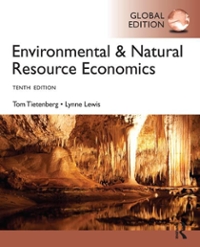Question
According to information gathered from the USA Census Bureau website, in 2021 the official poverty rate was estimated at 11.6% of U.S. households. That is,
According to information gathered from the USA Census Bureau website, in 2021 the official poverty rate was estimated at 11.6% of U.S. households. That is, some 37.9 million people were estimated to be poor. Suppose someone came up with the idea of asking the government to produce more money and that this new money would be distributed to families living in poverty. The person who came up with the "brilliant idea" asks you a series of questions.
According to information gathered from the USA Census Bureau website, in 2021 the official poverty rate was estimated at 11.6% of families in the United States of America. That is, some 37.9 million people were estimated to be poor. Suppose someone came up with the idea of asking the government to produce more money and that this new money would be distributed to families living in poverty. The person who came up with the "brilliant idea" asks you a series of questions:
- Which government institution can create the most money?
- What tools does the Fed have to regulate money creation in the economy? What is the long-run impact of a larger money supply on inflation? Support your answer using the quantitative theory of money formula M V=P Q.
- Present a time series graph for the United States, from 1980 to the most recent date, using data from the IMF (www.img.org). (1) On the X-axis plot the growth rate of money (M2) minus the growth rate of real GDP and (2) on the Y-axis plot the inflation rate. According to your graph, is the quantity theory of money true in the United States? Your graph should be similar to the one we have prepared for your reference:
- According to both theories, (1) the Quantity Theory of Money and (2) of Long-run Purchasing Power Parity, the nominal exchange rate of one country's currency against another country's currency is a monetary phenomenon and is determined by the quantity of money in circulation in both countries (Loria, 2010, p. 225). Loria argues that these market forces explain the trends in the U.S. and Mexican dollars. Present a time series graph for the United States and Mexico, from 1980 to the most recent date, using information from the IMF (www.img.org) in which (1) on the X-axis illustrate the rate of change of the nominal exchange rate of each country and (2) on the Y-axis illustrate the inflation rate of each country. Note: The nominal exchange rate of Mexican pesos per U.S. dollar, E, is equal to the real exchange rate, RER, times the ratio of inflation in Mexico to inflation in the United States, P*/PP. In other words, the formula for the nominal exchange rate is as follows: E = RER x (P* /P). Your graph should be similar to the one we have prepared for your reference:
- In conclusion, based on your answers above, do you agree that the idea in the forum statement is good? Why yes or why no?
Attention: This week's topic is intended to give you the opportunity to explore the impact of monetary policy on the economy; specifically on the general price level and the nominal exchange rate. You will need to demonstrate an understanding of the Fed's tools to regulate monetary creation.
Reference:
United States Census Bureau (2023). Income and Poverty in the United States: 2021. Information retrieved from: http://www.census.gov/library/publications/2014/demo/p60-249.html
Step by Step Solution
There are 3 Steps involved in it
Step: 1

Get Instant Access to Expert-Tailored Solutions
See step-by-step solutions with expert insights and AI powered tools for academic success
Step: 2

Step: 3

Ace Your Homework with AI
Get the answers you need in no time with our AI-driven, step-by-step assistance
Get Started


